Trussing a Chicken
What does trussing a chicken even mean, anyway? It sounds fancy and gourmet, but the Miriam-Webster definition of truss is “arrange for cooking by binding close the wings and legs of (a fowl).”
And why would anyone want to tie up the chicken so that the wings and legs are held tight into its body? Remember that, before the advent of closed ovens, most cooking was done over an open hearth. Rotisserie most often accomplished roasting, with the meat turning on a spit over a flame.
If cooks did not truss up the wings and legs of poultry or other fowl, they could flop about and not only run the risk of burning but also throw off the balance of the spit. Many spits were turned by mechanical devices using weights and pulleys, similar to the workings in grandfather clocks. The meat had to be well balanced on the spit to keep the mechanism turning. Trussing kept poultry and other fowl in a neat, tight package, making it easier to balance the spit, thus keeping it turning.
To Truss or Not To Truss
These days, we rarely rely on rotisserie cooking. Most roasting is accomplished in an oven with the meat stationary. Trussing, however, has not completely gone out of style. Now, many chefs truss the chicken for cosmetic reasons. It helps keep the birds’ shape when roasting and provides better presentation. Some folks truss birds when they stuff them to keep the stuffing from falling out, but I’m not a big fan of filling the cavity except for a lemon and/or herbs.
So, is it really necessary to truss at all? The not-so-short answer is that it depends. There are pros and cons on both sides.
- Trussing will help keep poultry in shape and help keep wing tips and leg ends from burning.
- Trussing allows for a beautiful presentation, such as a celebration such as Thanksgiving or Christmas.
- A trussed bird will take longer to roast, and the skin will not crisp evenly. The skin folded up between the legs and the body won’t brown at all, and the texture of that skin will be rubbery and unappealing.
Alternatives to Trussing a Bird
Choosing not to truss gives the cook more freedom in deciding how to cook the bird. You could choose to butcher the bird and cook the dark meat separately from the white meat, ensuring that all the meat is perfectly cooked. Even if you leave the bird intact, it will cook a bit more quickly since the wings and legs aren’t bound to the body.
On the downside, roasting whole but un-trussed runs the risk of burning wing tips. Also, it’s almost impossible to make a “Ta Da” presentation for a special holiday with a bird that has been cut up.
I trust cookbook authors such as Barbara Kafka, who tell you not to truss the bird. That’s the wonderful thing about cooking, though. There is almost always more than one way to do something, and there are very few absolute rights and wrongs, just preferences. For those of you interested in trussing a bird for presentation purposes, here are some easy steps to follow.
How To Truss Your Chicken
- Place the chicken in front of you on a cutting board, legs pointing towards you.
- Take a long piece of butcher’s twine and place the center of it under the ends of the drumsticks.
- Pull the strings up around the ends of the drumsticks, cross them over, and run the string down and under each drumstick end. Pull tight to bring the ends of the drumsticks together.
- Run the string down along the sides of the bird where the leg and thigh meet.
- Catch the wings with the string, pulling them close to the sides of the bird.
- Turn the bird over, pull gently, and tie the strings off under the neck of the bird.
Spatchcocking
If you are not interested in serving the bird whole, spatchcocking might be for you. There is some question about the origin of the term spatchcock, but it likely comes from “dispatch cock,” or kill the old rooster. Spatchcocking is very simple to do. It provides you with a flattened bird that cooks evenly and provides you with plenty of crispy skin.
To spatchcock a bird, use kitchen shears to cut out the backbone. Just cut up either side of the spine. It takes less force than you might think, so your regular kitchen shears should be more than up for the job. Set aside the backbone. I often save it for stock.
Turn the bird skin side up and press down to crack the breastbone. Now, you can lay the chicken out flat in a roasting pan and proceed with cooking.
For the best of both worlds – fast, even cooking, crispy skin, and a Ta Da presentation – rather than cutting out the whole backbone, just cut along one side of the backbone before opening the bird up. Roast flat, let rest, and then use skewers to hold the bird together again. Then, you can present the bird whole, breast side up.

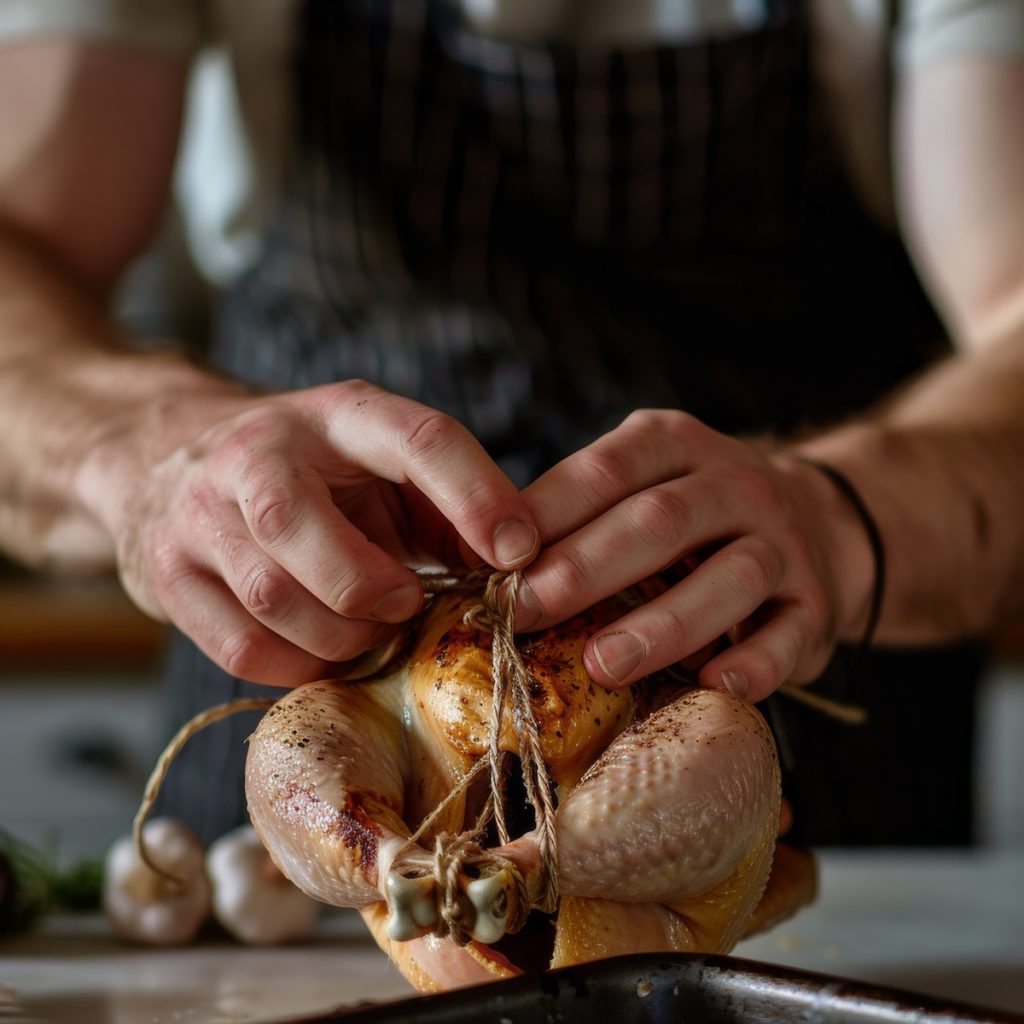
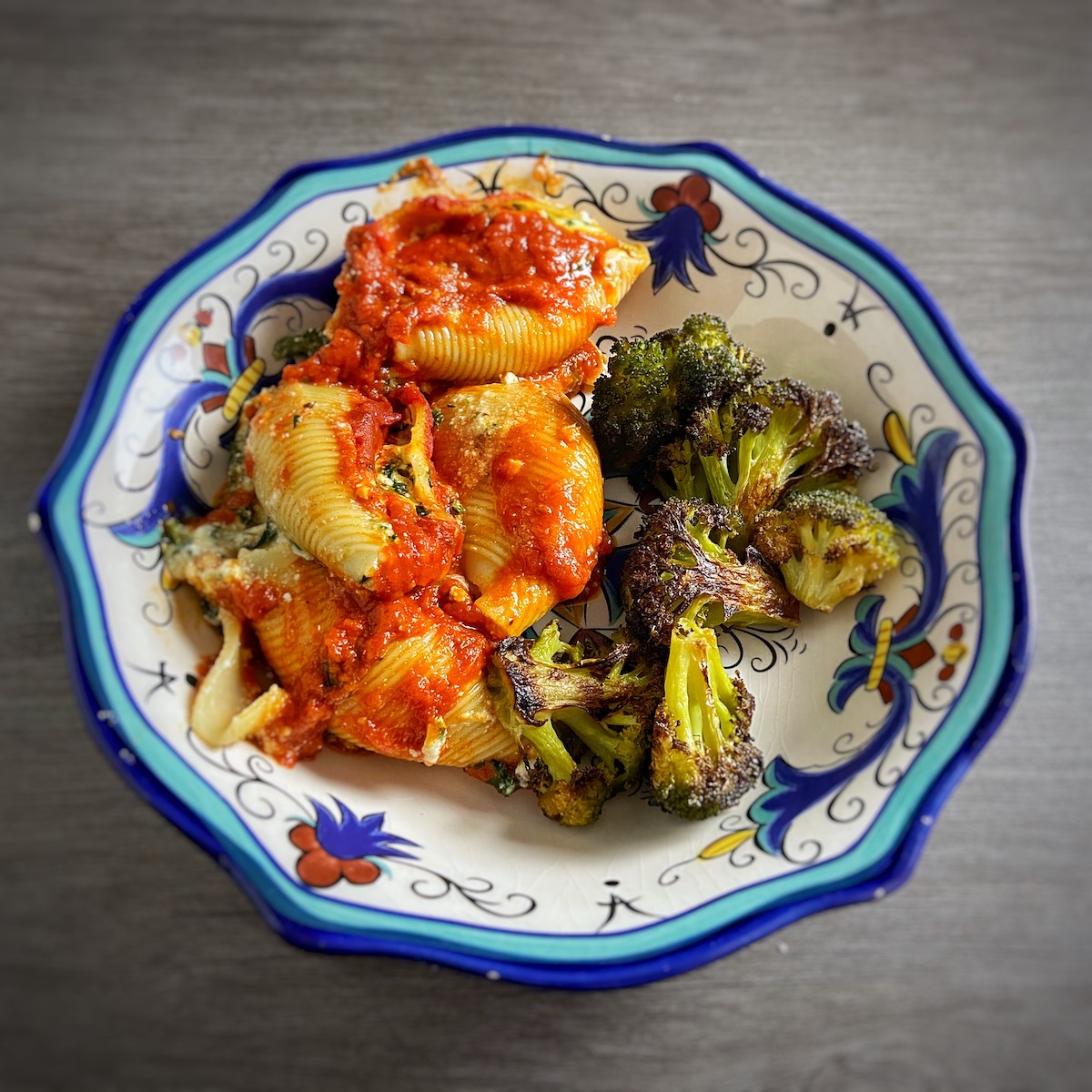
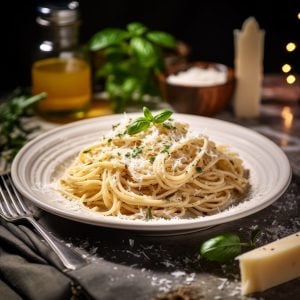


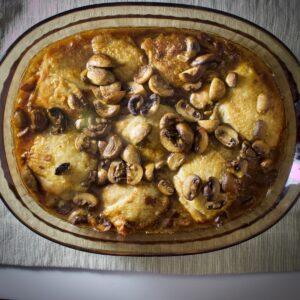
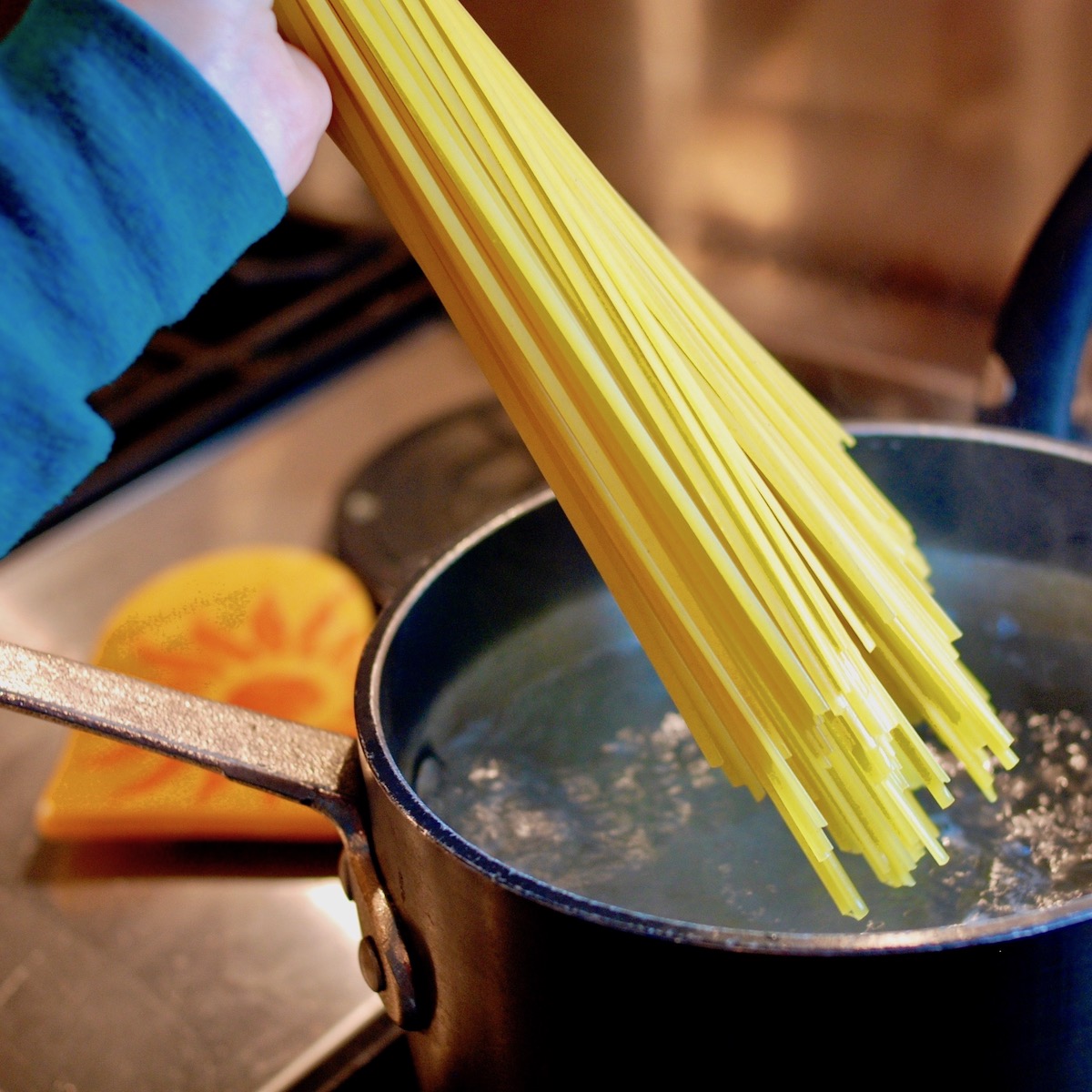
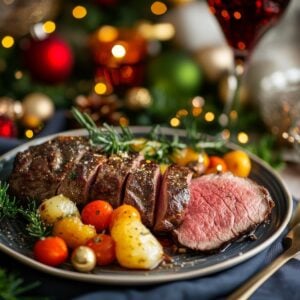
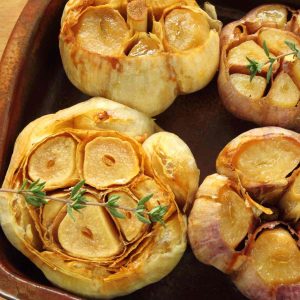
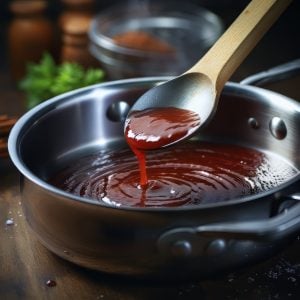
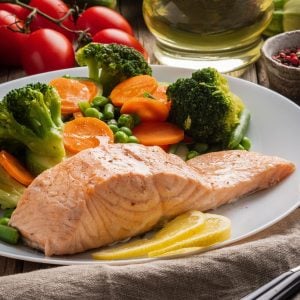
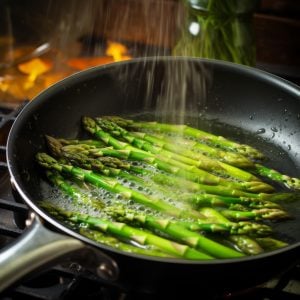
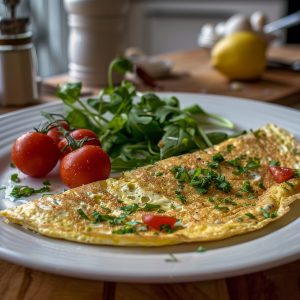


One Response
Trussing and buying whole birds has completely changed the way I view chicken. The transformation of taste in indescribable. I began purchasing whole birds about 2 years ago for the sole purpose of making stock (thanks Michael, the small batches simmering in a 190 degree oven was a breakthru for me) and I also discovered that bird on the bone was definitely the way to go! Carving a chicken is actually quite easy and there are several methods, I prefer to breakdown into 8 pieces where the wing is attached to a portion of the breast. My advice to everyone is practice even if you butcher your butchering, the taste will be the same.